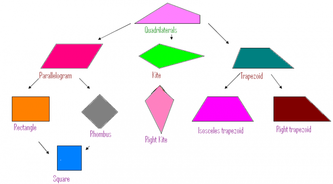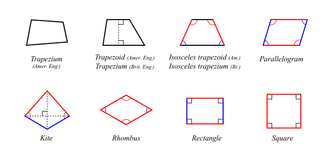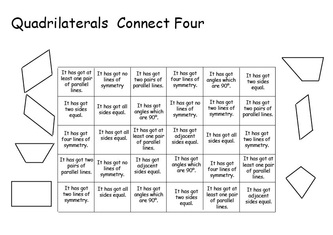For my weekly work, I researched ways to teach the concept of quadrilaterals and what characteristics make up the different types. I found examples of activities that I could do in a classroom where kids get to play quadrilateral games and they can learn from helping one another play. To start, I would first introduce the idea of quadrilaterals. If I was teaching a younger elementary class, I would begin by describing it's four sides and show pictures like the ones below. I would also try to explain the different types of quadrilaterals and let the kids each draw them so they can compare and talk together about what makes that shape.
To teach these shapes, I would describe what makes the shapes of quadrilaterals such as a square, rectangle, rhombus, parallelogram, trapezoid, kite, concave, and a general quadrilateral. I would make sure to show examples of what they look like and then have every student draw them on notecards so they can refer back if they forget what makes a shape. After they become familiar with the shapes I would introduce the concept of parallel and congruent sides. I would teach this in a way that would be interactive, rather than just talking, so I would create a game where the kids would have to sort quadrilaterals by being parallel or congruent.
I researched a few activities that would be fun in the classroom to review and help students learn from each other by talking and solving problems. I found a game called quadrilateral connect four. In the game, there is a paper game board with 30 squares, each containing characteristics of quadrilaterals. There is also game cards that have all of the quadrilaterals and the students would split up into two groups and work with their partner to place down cards that fit the description. The first teams to have four in a row would win the game.
Overall, in teaching quadrilaterals, I found that it is important to make sure students understand through hands on learning and working with other students. In classroom activities, it is important for kids to learn from one another because often students learn better when teaching others. From this lesson, I would be able to help students understand the different properties of shapes and build on the ideas for further lessons in math.




 RSS Feed
RSS Feed